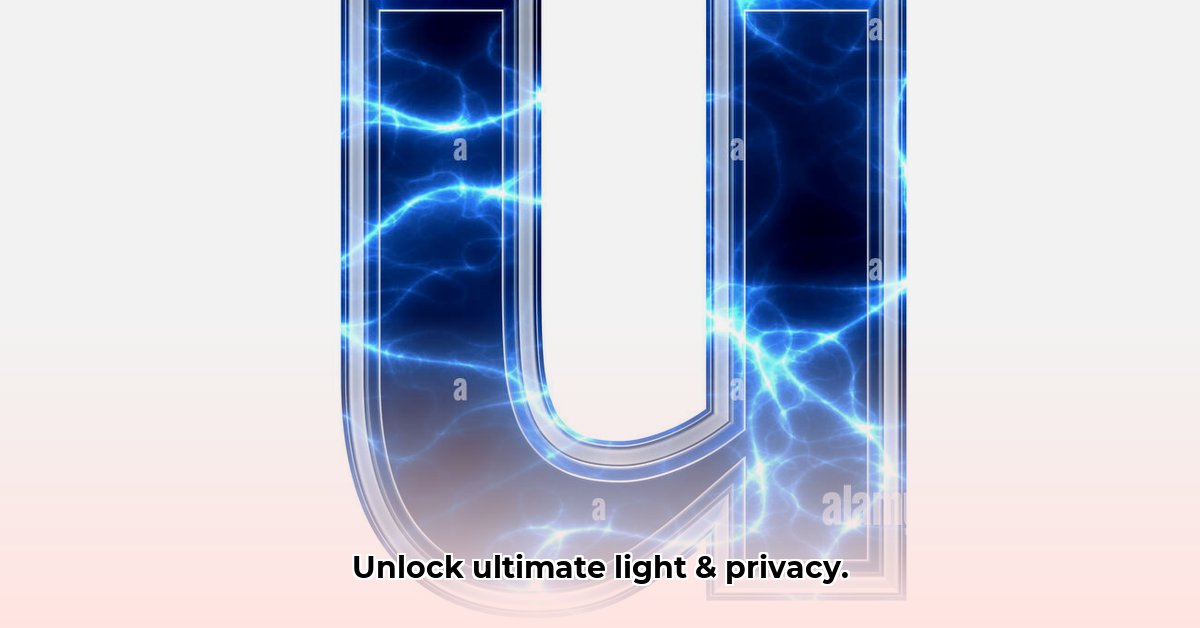Thinking about building a new home? U-shaped floor plans offer a fantastic way to get amazing natural light and privacy, all while looking stylish. This article is your complete guide to understanding U-shaped homes, from why they’re a great choice to designing one that’s perfect for you. For more floor plan options, check out different floor plans.
Understanding U-Shaped Home Design
U-shaped homes are distinctive designs that stand out, offering a unique blend of indoor and outdoor living. Defined by their U or horseshoe shape, these homes typically feature two main living areas connected by a hallway, breezeway, or narrow room, often surrounding a central courtyard. While they gained popularity in the mid-20th century, they remain a compelling option for those seeking a home with character and functionality.
The Allure of the Central Courtyard
The heart of a U-shaped home is, without a doubt, its central courtyard. This outdoor space serves as a private oasis, bathed in sunlight and shielded from the outside world. The courtyard acts as a natural light source, illuminating the surrounding interior rooms, reducing reliance on artificial lighting, and potentially lowering energy bills.
Key Benefits of U-Shaped Homes
U-shaped home designs offer several distinct advantages:
- Enhanced Natural Light: The open courtyard allows for abundant natural light to penetrate deep into the home’s interior.
- Increased Privacy: The U-shape design can create a secluded outdoor space, shielded from street views and neighboring properties.
- Wind Protection: The walls of the house act as natural windbreaks, making the courtyard a comfortable outdoor living area.
- Unique Curb Appeal: Their distinctive architecture often translates to increased resale value.
- Single-Story Living: Often designed as ranch-style homes, U-shaped plans are ideal for those seeking single-story living.
Considerations Before Building
While U-shaped homes offer many benefits, it’s essential to consider potential drawbacks:
- Lot Size Requirements: The U-shape design typically requires a wider lot to accommodate the layout.
- Design Complexity: Planning the layout and flow of a U-shaped home can be more complex than traditional designs.
- Potential Cost: Depending on the design and materials, construction costs could be higher than standard house plans.
Designing Your Ideal U-Shaped Space
Designing the ideal U-shaped home requires careful planning and consideration of various factors.
Site Analysis & Orientation
Begin with a thorough analysis of your property, considering its size, shape, and orientation. Strategic placement of the courtyard is crucial for maximizing sunlight exposure and privacy. Understanding the sun’s path will help determine the optimal placement of windows and outdoor living spaces.
Lifestyle Considerations
Consider your lifestyle and how you plan to utilize the space. Do you envision a lush garden, an outdoor kitchen, a swimming pool, or a play area for children? Tailor the courtyard design to suit your specific needs and preferences.
Floor Plan & Room Layout
Carefully plan the floor plan to ensure a seamless flow between indoor and outdoor spaces. Consider placing primary living areas along one side of the “U,” with bedrooms or guest suites on the opposite side, creating a natural separation of space.
Material Selection
Choose building materials that complement the overall design aesthetic and consider sustainability and energy efficiency. Incorporate natural elements, such as wood, stone, and glass, to enhance the connection with the outdoors.
Construction and Landscaping
Working with Professionals
Partnering with experienced architects, builders, and landscapers is crucial for bringing your vision to life. Clear communication and collaboration are essential throughout the construction process.
Courtyard Landscaping
Landscaping is the final touch that will transform your courtyard into a private oasis. Select plants and features that thrive in your local climate and complement the overall design. Consider incorporating water features, seating areas, and lighting to create a welcoming and functional outdoor space.
Long-Term Maintenance
Courtyard Upkeep
Maintaining the courtyard requires effort, including regular cleaning, plant care, and upkeep of any water features or outdoor structures. Factor these costs into your budget to ensure the long-term beauty and functionality of your home.
Energy Efficiency Considerations
Optimize energy efficiency by utilizing energy-efficient windows, insulation, and HVAC systems. Consider incorporating solar panels to reduce your carbon footprint and lower energy bills.
U-Shaped House Design: Pros and Cons
| Pros | Cons |
|---|---|
| Abundant natural light throughout the home | Requires a relatively large property |
| Enhanced privacy | Interior flow can be more complex to design |
| Highly customizable courtyard space | Potentially higher initial construction costs |
| Unique and visually appealing design | May require specialized architectural skills |
| Protection against wind | |
| Great curb appeal and resale value | |
| Good choice for older adults |
Maximizing Natural Light in a U-Shaped House Design
Key Takeaways:
- Strategic planning maximizes natural light potential in U-shaped homes.
- Window placement is critical.
- Courtyard design impacts light penetration.
Understanding the Potential
U-shaped homes offer unique opportunities for maximizing natural light thanks to enclosed courtyards. The central courtyard acts as a light well, bouncing sunlight into the interior spaces.
Strategic Window Placement
Maximize natural light with strategic window placement. Consider windows as the eyes of your home, the primary conduits for natural light. In a U-shaped design, you have multiple opportunities to strategically position windows to capture sunlight.
- Step 1: Analyze your lot to determine which walls receive the most morning, noon, and afternoon sun.
- Step 2: Place larger windows on sun-facing walls, prioritizing glass sizes to admit more light.
- Step 3: Use smaller windows on less sunny walls.
Courtyard Illumination
The courtyard design directly affects light penetration. Design it as a natural light amplifier using reflective surfaces and vegetation management. Light-colored paving stones or paint on walls reflect light back into the house, brightening the interior. It is estimated that strategic openings (like glass panels) can amplify daylight penetration.
Enhancing Overall Natural Light
Beyond window placement and courtyard design, other elements brighten a home. Opt for light-colored paints and interior finishes, as dark colors absorb light. Mirrors can bounce light around the room, creating spaciousness. Skylights bring natural light into the upper floors.
U-Shaped House Design: More Pros and Cons
| Pros | Cons |
|---|---|
| Excellent natural light potential | Site suitability is crucial |
| Enhanced privacy | Potentially higher construction costs |
| Versatile outdoor living space | Courtyard maintenance might be time-consuming |
| Aesthetically pleasing | May not be ideal for all lot sizes |
| Potential increased property value | Design complexity |
U-Shaped House Plans for Small Lots: Maximizing Space and Privacy
Key Takeaways:
- U-shaped homes cleverly use space, creating a private courtyard.
- They excel at maximizing natural light.
- Design choices significantly impact home functionality.
Benefits of Sunlight and Seclusion
Why choose a U-shaped home? The answer lies in its ability to blend privacy with abundant natural light. The enclosed courtyard provides a private sanctuary. This design is about smart space management, making the courtyard an extension of your living area.
Space Optimization
Designing U-shaped house plans for small lots requires consideration, so space optimization is key. Maximize every square foot by going vertical and adding a second story. Clever layouts make rooms feel larger than they are. Thoughtful planning with a skilled architect is very important.
Maximizing Natural Resources
A home’s orientation affects its natural lighting and U-shaped designs capture sunlight wonderfully. The courtyard acts as a light well, so balance these factors to create a comfortable home.
Courtyard Design Considerations
The courtyard is the heart of a U-shaped home and a flexible space, adaptable to various needs, so consider the placement of your home relative to neighboring properties to maintain privacy through strategic landscaping.
Practicalities and Potential Pitfalls
While U-shaped houses offer numerous advantages, construction costs may be higher than other home styles. Smart planning can mitigate these risks, such as a single-story design to simplify construction.
Choosing the Right Design
Before embarking on this design journey, ask yourself some key questions:
- What is your budget and the size of your lot?
- What is your design preference?
- How much privacy do you need?
- How large a courtyard are you envisioning?
Answering these questions will guide your journey to your dream home!
U-Shaped Modern Farmhouse Designs: Courtyard Integration and Aesthetics
Key Takeaways:
- U-shaped homes with courtyards offer exceptional privacy and improved natural light.
- Courtyards create versatile outdoor living spaces.
- Careful planning is crucial.
Maximizing Light and Privacy
The U-shaped modern farmhouse design trend prioritizes beauty and functionality. This layout excels in maximizing natural light and privacy. The courtyard acts as a natural light well, illuminating the interior spaces, reducing the need for artificial lighting. The U-shape creates a sense of enclosure and privacy, shielding your living areas from the outside world.
Courtyard Design
The courtyard itself is a canvas for your creativity, but how big should it be? What materials and plants will best complement your
- Gray Kitchen Backsplash Ideas: Find Your Perfect Gray Tile - December 11, 2025
- Glass Wall Tiles For Bathroom: A Stylish, Durable Choice - December 10, 2025
- Glass Mosaic Kitchen Backsplash: Add Shimmer and Style - December 9, 2025









